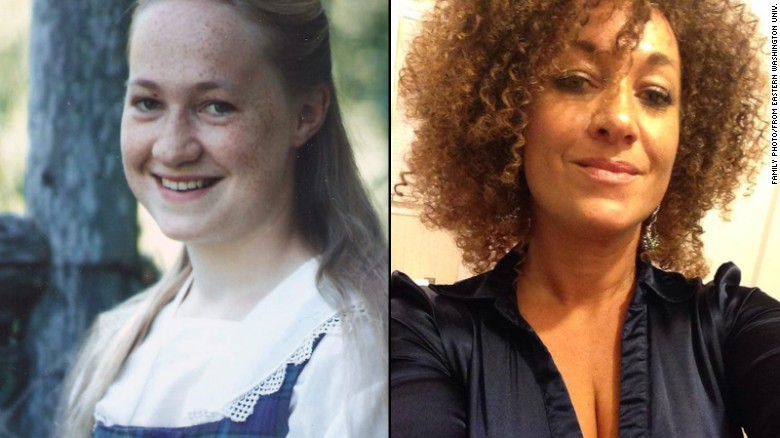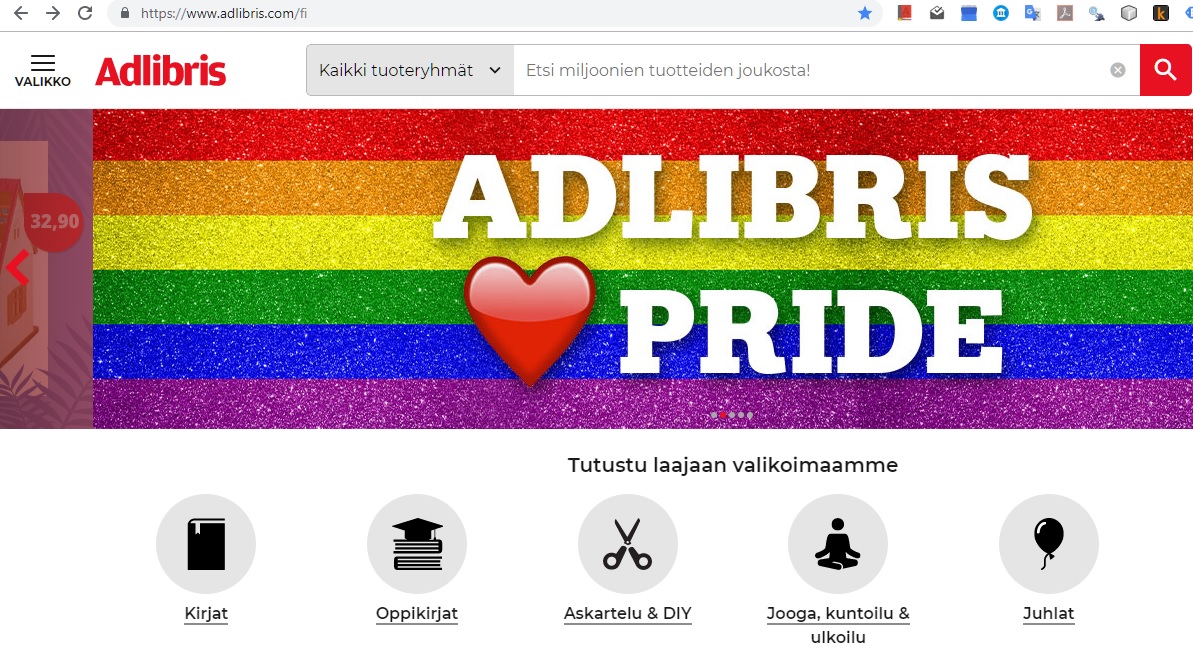One often hears statements like “I am proud of my father”, “I am proud of my son”, “I am proud of my English heritage”, “I am a proud Jew”.
“Black Pride”, “White Pride”, “Gay Pride” or ” LGBT Pride” are cultural-political movements, expressing pride in one’s race or sexual orientation.

I call these kinds of pride “being-proud-of-others” because the person feels pride towards or on behalf of another person or a group of persons.
Justifiability of “being-proud-of-others”
In Part 2, the conditions of justified pride are listed as follows. Condition 3 is depicted in bold because this is what this Part will concentrate on.
- the thing or event which is the reason for the pride actually exists or has taken place
- it is actually a positive thing
- you actually had a share in bringing about that positive thing, that is, you were partially or fully responsible for it. The amount of pride should correspond to the level of responsibility
If you feel pride of a person or of a group – family, nation, race, etc. – Condition 3 seems to be often missing. As an example, you might say “I am proud of my ancestors”. In which sense can you claim responsibility for any good thing your ancestors mighty have done? Another example is pride in your race. In which sense can you be responsible for the deeds of the race you belong to? According to Condition 3 above these kinds of pride are unjustifiable.
But, consider the following two situations:
- A father says this about his daughter, after she received good marks at a university exam: “I am very proud of my daughter. She only succeeded so well because I taught her to be hard-working”
- A daughter says this about her father: “I am very proud of my father. He always worked so hard to provide for the family”
Condition 3 doesn’t seem to be fulfilled in either of the above cases. Still, we feel that there is a difference between them. In the first case, the father claims full responsibility for his daughter’s success. This cannot be true: though he might have had a share in her success, for example by raising her to be hard-working, the daughter definitely had a share in her own success, too. Thus, the father’s pride is not justified because he claims full responsibility where there was only partial responsibility. This case of unjustified pride has already been described in Part 2.
In the second case, the daughter can hardly claim any direct responsibility for her father’s deeds. Still, it feels that her pride in her father is more justified than the father’s pride in her daughter in the first case. How can this be possible?
Identification with others
It is posited here that “being-proud-of-others” can be justified if the person identifies with another person or a group – even if the person had no direct involvement in any achievement by the other person or of the group – and if the identification is realistic and rational (see more about these below).
Furthermore, it is posited that the stronger such an identification is, the stronger is the justification for the pride (given, of course, that Conditions 1 and 2 are also fulfilled).
How does identification with others develop?
It is hypothesized here that one important factor in creating identification with a person or a group is similarity. A person compares himself to another person or to a group and the more features are common, the stronger the identification with the other person or the group. A related theory in social psychology is self-categorization theory (Turner et al., 1987).
This kind of similarity based identification with others is apparently present in humans already at a very young age. Child psychologist Paul Bloom writes this in his New York Times article The Moral Life of Babies:
In fact, our initial moral sense appears to be biased toward our own kind. There’s plenty of research showing that babies have within-group preferences: 3-month-olds prefer the faces of the race that is most familiar to them to those of other races; 11-month-olds prefer individuals who share their own taste in food and expect these individuals to be nicer than those with different tastes; 12-month-olds prefer to learn from someone who speaks their own language over someone who speaks a foreign language. And studies with young children have found that once they are segregated into different groups — even under the most arbitrary of schemes, like wearing different colored T-shirts — they eagerly favor their own groups in their attitudes and their actions.
These early preferences indicate that they have a genetic basis and have thus developed during the evolution of the human species.
Identification with a group supports the emergence of altruistic behaviors which help the survival of the group. members of the individual’s family, kinship and ethnic group. If the individual helps other members of such groups to survive, this altruistic behavior will lead to an increased chance of the survival of the individual’s genes because of the commonality of genes between the individual and members of those groups (Dutton, 2018). This is the evolutionary reason for such behaviors to develop.
There is an enhanced genetic similarity within such groups which results in phenotypic similarity – of facial features, hair and skin color, body shape, etc. This similarity is perceived by members of the group and leads to increased bonding and identification with the group.
Humans can be similar to each other on many other dimensions, too, such as nation, values, culture, ideology, social class, interests, or religion.
There can be hierarchies of groups based on these dimensions. For example, people in Germany belong to the German nation. But most of them also belong to the broader group white (or Caucasian) race, which can encompass many nations. Furthermore, most of these people will also belong to the even larger group of Western culture, which can encompass different races.
A person can identify with many such groups, at different levels. Thus, he can identify himself as a white German, who shares values of the Western culture.
Identification can result in an increased feeling of being associated with another person or the group. The person perceives an overlap – identical features, identity – between the interests, motivations, activities, thinking, etc. of the other person or of the group. The person experiences this as a kind of merging with the other person or with the group. Actions of them feel, to some extent, like his own actions. For this reason, taking a share of responsibility for their actions is justified.
Realistic and unrealistic identification with others
Identification with a person or a group can be more or less realistic. When your identification is based on a reasonably large overlap of features between yourself and the target of your identification, then your identification with the group is realistic.
What a reasonably large overlap of features is, can of course be debated and I don’t attempt to define it here. Instead, I give some examples for identification with others which I find realistic and for others which I see as unrealistic. For example, if you study at a university and you identify as a student, then this identification is realistic. Or, if you were born in the USA, have grown up there, went to school there, read American newspapers, vote in the elections, and are US citizen, then your identification as an American is realistic.

But consider the case of Elizabeth Warren, a Democratic senator for the US state Massachusetts, who for years identified herself – also on official documents – as an American Indian (a Cherokee, in fact). She is a blond haired, blue eyed woman, with no tribal association to any Indian tribe. A DNA test that she undertook suggested that she might have had an Indian ancestor 6-10 generations ago. Tribal leaders were angered by her behavior and by the DNA test, and she apologized “for causing confusion on tribal sovereignty and tribal citizenship and the harm that has resulted”.
A similar story has emerged a few years ago about Rachel Dolezal who, despite being a white woman, for years identified as black, going as far as working as the head of the local chapter of the National Association for the Advancement of Colored People (NAACP). Both of her parents identified themselves as whites (“Caucasian”).

Both the self-identification of Warren and that of Dolezal seem unrealistic, fake and might be cases of conscious cheating.
Rational and irrational identification with others
Identification is rational if the thought process underlying the identification is an assessment of the common features between yourself and the target of your identification. The more other processes – fear, peer pressure, craving for acceptance by others, ideology, “brain washing”, “identification with the aggressor” or “Stockholm-syndrome”, cult of a strong leader, etc. – are involved, the less rational is the identification.
Some of these processes can result in an overly strong group identity: members of the group might lose much of their own individual identity which is then more and more replaced by the group identity. The person acts more and more in the group’s interest and less and less in his own individual interest. In some groups a strong leader defines his own interests as the group’s interests.
Examples for such overly strong group identity can be found in religious or political sects. Abusive relationships are another example, in particular when psychological abuse is prevalent. A further example is “identification with the aggressor”, when the person, in order to escape worse consequences, adopts views and interests of the aggressor. These are clearly examples of an unhealthy, pathological identification.
A further type of pathological identification is actually a psychiatric disorder, a delusion: the person’s identification with another person goes so far that he actually thinks he is that other person. Examples are delusions of being a famous person like Napoleon.
Identification and pride
Let’s go back to the example of a daughter who is proud of her father because he diligently provided for the family and see how group identity will make the pride of the daughter justifiable, in spite of the fact that she wasn’t responsible for her father’s hard work.
The daughter probably shares many common interests with the father. She also shares many memories, attitudes, ways of thinking and also physical features with him: there is a large overlap – a large amount of identity – between such features of the daughter and of the father. Emotions like love and admiration are also present between the daughter and the father.
The daughter perceives and experiences all this as an identification with her father and thus actions of the father can, to some extent, feel like her own actions. This satisfies – to a certain extent – Condition 3 of justifiable pride. Thus, though anybody – including the daughter herself – will recognize that she wasn’t responsible for her father’s hard work, her pride in her father’s past deeds can be seen as justified, to some extent.
In contrast, if Elizabeth Warren said this: “I am very proud of my Cherokee ancestors”, it would feel unjustified and actually ridiculous, because of the unrealistic nature of her identification with Cherokees. Similarly, assume that a person who has been kidnapped by a terrorist group and then brainwashed to identify with the goals of the group, said this: “I am proud of this group”. This would sound similarly unjustified and actually sad because of the irrational, pathological nature of this “identification with the aggressor”.
In summary, pride in the achievements of others can be justified if you identify with those others and if that identification is realistic and rational.
Thus, we can update the Conditions for justified pride like this:
- the thing or event which is the reason for the pride actually exists or has taken place
- it is actually a positive thing
- you actually had a share in bringing about that positive thing, that is, you were partially or fully responsible for it. The amount of pride should correspond to the level of responsibility, or
- a person or a group that you realistically and rationally identify with actually had a share in bringing about that positive thing.
If Condition 3 is true then you have justified pride about yourself, and if Condition 4 is true then you have justified pride about other people or about a group.
Patriotism and pride
According to the above, if you are patriotic – and thus identify with a nation – then your pride in that nation can be justified, because Condition 4 is fulfilled.
Of course, Conditions 1 and 2 should be fulfilled, too, and in some cases of national pride this doesn’t happen. You might attribute great things to your nation in its history which haven’t actually happened – as in the example of many Egyptians and Syrians being proud of their nations’ “victory” in the Yom Kippur war, mentioned in Part 2 .
However, the point is that, in principle, national pride can be justified.
Culture and pride
If you identify with a particular culture and that culture has created some positive things, your pride in that culture can be justified. Most cultures have some such things, at least historically. For example, Muslims can be justifiably proud of their “Golden Age” during the Middle Ages, and European people can be justifiably proud of their Scientific and Industrial revolutions between the 17th and 19th centuries.
The same warning applies here as mentioned above regarding national pride: it is easy to attribute positive achievements to your culture which haven’t happened in reality – or happened to a far smaller degree – and thus Condition 1 is not fulfilled or fulfilled only partially.
One example of unjustified cultural / religious pride is Turkish President Erdogan’s claim that Muslims have discovered America, hundreds of years before Columbus. Condition 1 is not fulfilled because there is only extremely weak evidence that Erdogan’s statement is true.
Another example is the pride that some Muslims express about the Islamic “Golden Age”. As mentioned above, a large amount of pride is justified – the “Golden Age” was in fact a very remarkable achievement of Islamic civilization – but this pride becomes overblown when some Muslims attribute to it the origin of all sorts of later inventions, for example the invention of human flight, and maintain that it was the origin of European rational thinking. Thus, in this case Condition 1 is only partially fulfilled, and the overblown pride is not justified.
The 1001 Inventions exhibition is an example for this unjustifiably inflated pride.
Race and pride
The same can be said about someone who expresses pride in their own race – though, of course, as the examples of Elizabeth Warren and of Rachel Dolezal show, the racial identity should be realistic.
Conditions 1 and 2 should be fulfilled here, too, but in some cases of pride this doesn’t happen. For example, some blacks claim that ancient Egypt was a black civilization, that is, the population of ancient Egypt was predominantly black African. There is some controversy about this, but most modern scholars agree that ancient Egyptians were not black Africans. Thus Condition 1 is probably not satisfied and the pride of some blacks to have built up the sophisticated civilization of ancient Egypt is probably not justified.
Black pride about ancient Egypt (called ‘Kemit’ in the video)
However, in principle, racial pride can be justified, if there is a realistic and rational identification with a particular race and if Conditions 1 and 2 are fulfilled, meaning that your race actually was responsible for the achievements you claim for it. This can be true for all races of mankind, as all of them can realistically point to some past or present achievements.
One problem with racial pride is that it often involves contempt of other races. The equivalent is true for national pride and for cultural pride. This doesn’t have to be the case: you can be proud of your own race (or nation or culture), and at the same time look at the achievements of others realistically but without contempt, and even admiringly.
Sexual orientation and pride
This is more problematic because it might be difficult to find some positive, good thing that a particular sexual orientation as a group achieved. For example, what would be an achievement that heterosexuals have reached – as heterosexuals?
However, with regard to homosexuals, the situation is somewhat different. While heterosexuals never had to suffer discrimination, it has been different for homosexuals for hundreds of years. This situation started to change in the USA in the 1960’s as a result of the fight for equality by homosexual individuals and organizations. Decriminalization of homosexual activity and more attempts to achieve complete equality – e.g. acceptance of homosexual relationships as marriage – followed in most Western nations.
To the extent that one sees these results as positive – as many people do nowadays – there is justification for a “gay pride”: it was a large achievement, mostly by the gay and LGBT community.
Another idea about the achievement that might justify a “gay pride” is the courage required to “come out of the closet”, to become openly gay. While this did require courage 30-50 years ago, the situation is very different now – at least in Western societies. In Western Europe, there is not only an acceptance but an enthusiastic support for the LGBT community. As an example, the Facebook page of the University of Helsinki shows the multi-colored Pride flag, showing support for the 2019 Helsinki Pride Week. Private companies are also in support, as the web site of the Finnish online book store Adlibris shows below.

Certainly, a “Pride” event in a Muslim country would require enormous courage, would satisfy Conditions 1 and 2 and would thus fully justify a feeling of pride.
But in the Western world there is nowadays very little achievement that could be associated with this pride. In other words, Conditions 1 and 2 are missing. “Pride” in this context became an empty word, a baseless self-congratulation.
On the other hand, it is not quite clear whether the “Pride” activists really had any achievement in mind when coining the term “gay pride”. It seems that this pride has been nourished by some early activists as a counter pole to the shame and guilt that many gays experienced during the 50’s and 60’s. While one could agree that LGBT people should not have to feel shame or guilt because of their sexual orientation, we would argue that pride doesn’t follow from such an absence of shame or guilt. Pride in this case seems like an over-compensation. It probably was an effective weapon in the arsenal of gay people fighting against discrimination, but this doesn’t mean that it is justified in the sense that the term “justified pride” is used here. In this case, too, the reason for this lack of justification is that Conditions 1 and 2 are missing: pride is simply asserted without an achievement.
Literature
Dutton, E. (2018). At Our Wits’ End: Why We’re Becoming Less Intelligent and What it Means for the Future. Societas.
Turner, J. C., Hogg, M. A., Oakes, P. J., Reicher, S. D., & Wetherell, M. S. (1987). Rediscovering the Social Group: A self-categorization Theory. New York: Blackwell.
To be continued

Be the first to comment on "Identity and pride, Part 3: Being proud of others"